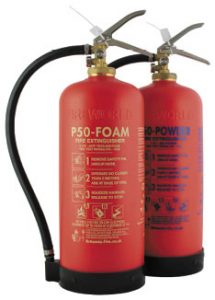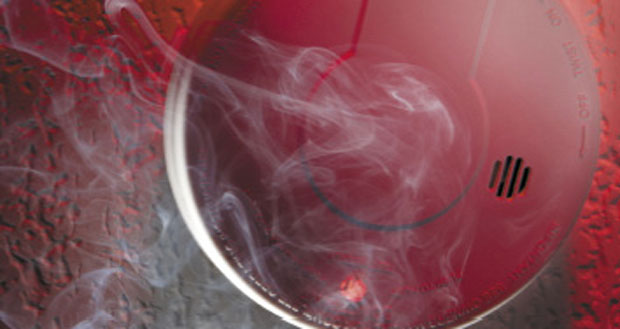 Richard Jenkins, Chief Executive of the National Security Inspectorate, explains the implications of life safety fire risk assessments and how ‘Duty Holders’ can best discharge their legal responsibilities.
Richard Jenkins, Chief Executive of the National Security Inspectorate, explains the implications of life safety fire risk assessments and how ‘Duty Holders’ can best discharge their legal responsibilities.
No matter how extraordinary the now routine pandemic circumstances, it’s important to not lose sight of fire safety essentials. Even whilst still coping with the ongoing effects of COVID-19 and its impact on the use of space and occupancy, fire risk assessment is a mandatory duty not to be neglected.
Responsibility for fire safety in a building rests with the ‘Responsible Person’ or ‘Duty Holder’ under the Regulatory Reform (Fire Safety) Order 2005 in England and Wales, the Fire Scotland Act 2005, and the Fire & Rescue Services (Northern Ireland) Order 2006/Fire Safety Regulations (Northern Ireland) 2010. In the event of a fire, especially should death or serious injury have occurred, the Fire and Rescue Service will investigate and, where offences may have been committed, prosecution can follow.
ORGANISING A FIRE RISK ASSESSMENT
Life safety fire risk assessment (LSFRA) lies at the heart of establishing sufficient fire prevention, protection and suppression measures, alongside safe evacuation procedures to be applied in the event of an incident. These should include appropriate COVID-19-related social distancing measures at any evacuation point to ensure compliance with ongoing Government guidance and protect the health and safety of evacuees. Put simply, LSFRA protects lives and the Duty Holder is tasked with ensuring it is completed.
Assessment is best conducted when a building is occupied and operational since any changes to the use or occupancy of a building are essential to consider in any assessment, as is the integrity of physical elements such as escape routes and fire doors. Where five or more people are employed the results of LSFRAs must be documented and any LSFRAs must also be periodically reviewed to ensure they remain valid, for example when any change of use is implemented.
WHO IS THE ‘DUTY HOLDER’?
At first sight this may appear straightforward. Yet when it comes to premises with complex contractual arrangements such as private finance initiatives (PFIs), it’s not always so clear. The Duty Holder can be anyone with control and/or oversight of the premises, such as a facilities or estate manager, or it could be the owner, the landlord, or occupier(s). In most instances it is considered the responsibility of each employer to safeguard their employees, students and visitors. The Duty Holder has to work together with all other parties, such as the facilities management provider or assigned contractor, to ensure the requirements of the LSFRA are met.
 If the maintenance of the building (including regular fire alarm testing, portable fire extinguishers and other routine maintenance issues) is undertaken by the facilities management provider, and/or other contractors, the Duty Holder must, in order to fulfil their duty, maintain a close working relationship with all the providers, to ensure the required maintenance procedures are being carried out, and that changes in use are reflected in the siting and maintenance of safety equipment.
If the maintenance of the building (including regular fire alarm testing, portable fire extinguishers and other routine maintenance issues) is undertaken by the facilities management provider, and/or other contractors, the Duty Holder must, in order to fulfil their duty, maintain a close working relationship with all the providers, to ensure the required maintenance procedures are being carried out, and that changes in use are reflected in the siting and maintenance of safety equipment.
COMPETENCY CONSIDERATIONS
Mindful of the potential for overburdening organisations, UK legislation does not currently define fire risk assessor ‘competence’. Government guidance advises that where Duty Holders feel unable to complete a fire risk assessment they should seek the advice of a competent person. The guidance recommends assessments be conducted by a person with comprehensive training and experience in the type of fire risk assessment they are being asked to carry out.
Third Party Certification adds significant assurance and rigour for Duty Holders looking for a provider to help them meet fire safety obligations; it demonstrates to Duty Holders the professionalism and competency of LSFRA companies which invest in an independent, on-going audit programme looking at their operations. Organisations holding Third Party Certification as evidence of competence to conduct fire risk assessments demonstrate their services are in line with relevant fire safety legislation, current Codes of Practice, national guidance and best practice.
Organisations with responsibility for large numbers of people may consider independently assessed competence of contractors providing fire risk assessment a much preferable alternative to the self-declared capability of an individual assessor. This is all the more true in challenging environments such as hospitals, residential care premises, large shopping complexes and other facilities where occupancy profile and/or on-site processes may necessitate a complex or delayed fire evacuation strategy.
Following the 2017 Grenfell fire, the Independent Review of Building Regulations and Fire Safety by Dame Judith Hackitt – which reported the following year – emphasised the responsibilities of the person appointed for fire safety within a building and the actions they can take to mitigate fire risk.
CONCLUSION
Ensuring all appropriate fire safety measures are competently identified by risk assessment and effectively implemented remains a key task in workplaces reopening in line with the easing of government restrictions and safe working guidelines across  the four nations of the UK.
the four nations of the UK.
Calling on Third Party Certificated LSFRA providers to review measures in place can help Duty Holders ensure they have their fire safety bases covered.





